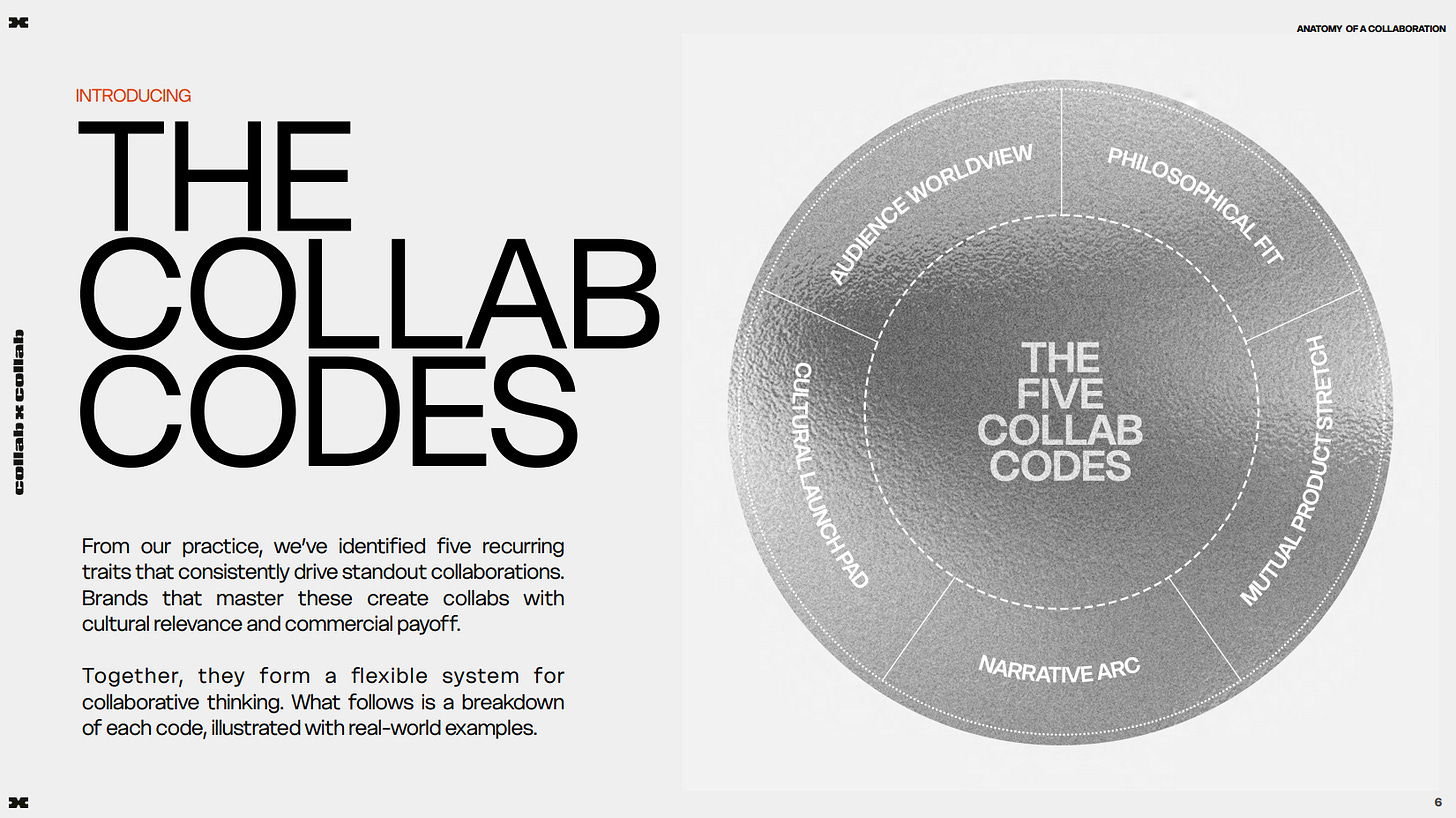In this week’s guest post, it is our pleasure to welcome Sam Schler, the founder of Collab x Collab, a New York-based brand collaborations agency that combines deep research and hand-on strategy to shape collaborations that resonate culturally and commercially. Sam and his team recently published a research report, “Anatomy of a collaboration,” excerpts of which are included here. It is a pleasure to have you here, Sam!
In 2003, Isaac Mizrahi’s partnership with Target was a game changer—proving luxury could meet mass and shifting how brands interacted across price points and social spheres. What began as a bold creative experiment is now standard practice. Two decades later, collaborations have become the fast food of marketing: easy to produce, mass-consumed, and rarely nourishing. In a saturated landscape, the challenge isn’t whether to collaborate—it’s how to create work that actually cuts through.
Today, collaborations are no longer novel; they’re operationalized. They sit in brand playbooks alongside influencer strategy and retail planning. Search interest in “brand collaborations” has grown 1,150% over the past decade. The result? Volume without clarity. In a loud landscape, it’s not about simply doing a collab. It’s about doing one worth remembering—that actually sticks in the collective imagination after it sells out.
If your collaboration could’ve been done in Photoshop, it’s not a collaboration. Great collabs invent something. They push categories. They create products only possible at the intersection of two skill sets. It demands real R&D, cross-disciplinary stretch, and the nerve to leave safe territory behind.
“Collaborations are one of the most relevant cultural products that brands have at their disposal. Instead of influencing culture through mass media and advertising in print, TV, and OOH, brands influence culture through merch, brand codes, archive reissues, creator partnerships, content, events - and collaborations. Considered as cultural products, collaborations become something that brands conceive, manage, productize, distribute, and monetize - a strategic and business exercise that transcends a creative and marketing department and becomes part of a brand's operating system,” per Ana Andjelic.
A collab without a hero product is merch. Period. You need that one piece—the grail, the icon, the thing that drives conversation. Then build tiers beneath it: accessible, but always on-brand. (And yes, this is why the best collaborations take 12+ months to develop. Excellence doesn't come from rushing.)
At their best, collaborations are more than marketing tactics. They’re creative exchanges that fuel a brand’s evolution and contribute something real to culture itself. The brands willing to approach them with rigor, imagination, and ambition will shape not just their own future, but the creative landscape around them.
The Strategic Imperatives for What’s Next
Install your collaboration command center
The graveyard of failed collaborations is filled with great ideas lost in translation between departments. Most brands don’t have a dedicated team to steward partnerships end to end—which is why even the best concepts get watered down in the execution phase. That’s where the Collaboration Command Center comes in. Think of it as a senior, cross-functional core team: a small group of collaboration curators who stay close from concept through launch. They translate the big idea across product, creative, legal, retail, and PR—making sure the vision stays intact while decisions get made fast. The Command Center keeps the partnership on course, the momentum high, and internal silos aligned. A great collaboration doesn’t just need vision. It needs stewardship.
Before you greenlight the partnership, ask:
Which supporting teams need to be involved, and at what stages of the process?
How will budgets be contributed—and if it’s a first-time collaboration, how will revenue be allocated internally?
Who are the three key internal stakeholders who will guide the collaboration from ideation to launch?
The collaboration landscape has never been more challenging to navigate—or more rich with opportunity. While the days of simple logo swaps are behind us, brands that dare to think bigger, dig deeper, and take calculated risks will find there's still plenty of uncharted territory.
Brands that master the Collab Codes—Audience Worldview, Philosophical Fit, Mutual Product Stretch, Narrative Arc, and Cultural Launch Pad—and apply key imperatives like timing, product strategy, marketing orchestration, cross functional stewardship, and long-term retention won't just move more efficiently through the collaborations space—they’ll raise the bar. They’ll create work that doesn't just chase attention, but earns lasting cultural relevance. To read more, download the full report.





